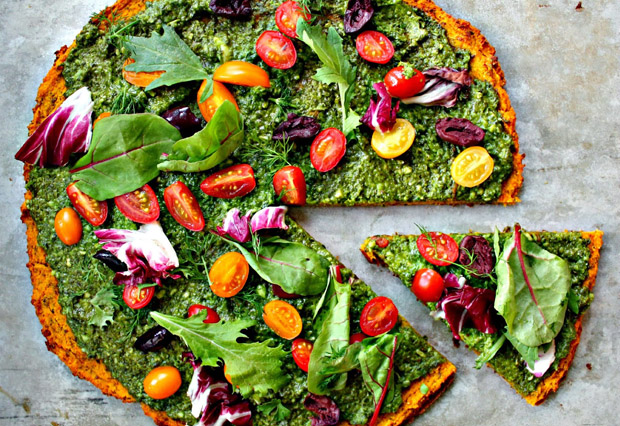Smart Eats
06 Mar 2018
Strategies for people on the go
By EDNA COX RICE, RDN, CSG, LDN

Whether you’re a college student away from home for the first time, a young professional starting a new job, or a new mom with a young family, it seems you’re always pressed for time. Life is full of transitions, but college, launching a career and starting a family in particular bring on challenges, additional responsibilities, and new stressors.
Taking time to eat smart is often sacrificed. When grab-and-go foods become the norm, it is tempting to overeat or choose junk foods. Those hunger pangs may be satisfied briefly, but you usually end up wanting something more.
For students, what happens at college doesn’t always stay at college – like the freshman 15! A study conducted by Auburn University discovered that over the four-year span of college, 70 percent of students gained 12 to 37 lbs. Between 2012 and 2016, the number of overweight students increased from 18 percent to 31 percent. Body fat composition and waist circumference increased with weight.
Changes that occur and result in weight gain are not changes in metabolism, but changes in lifestyle and activity levels. In high school, you may have played sports, but in college you may not have time to be as active. Once you gain weight, it can be much harder to take and keep it off.
In addition to college coursework, students learn many life skills – being organized, prioritizing, balancing social life and school responsibilities, and managing stress. What caused the weight gain? Vending machine snacks, late night eating while studying, too many free pizza and beer parties, and lack of physical activity. But what can be done to prevent it?
College is a great time to start eating healthier. Forming smart eating and drinking habits while in college can help you better navigate healthy eating any time, but especially during other transitional times in your life. Ridiculously-busy schedules, super-tight budgets, lack of cooking tools or limited culinary skills can make smart eating a challenge. Focus on these strategies that I call SmartEats for a healthier lifestyle.
- No culinary skills or fancy cooking gadgets needed. A small refrigerator, a microwave, and a coffee pot if you need a jolt to start your day (or a blender for smoothies) are all you need. All of these can be maintained in a small space regardless of where you reside.
- Stock up on healthy staples. Try to shop weekly and at least consider foods that would work for several meals. This habit will save time and help you learn to plan meals. Having to think about what to eat and getting to the grocery store daily becomes a chore. When fast food becomes your go-to solution, the results can be disastrous. Don’t overcomplicate your meals, keep them simple and healthy. Focus on making good choices, not necessarily the absolute best choice. As long as you make choices that offer more nutrition, include whole foods rather than junk foods, you’re on the right track.
Fresh produce is always the healthiest choice, but the shelf life is short. Hectic schedules don’t always allow for optimizing a fresh produce purchase. Frozen or canned fruits and veggies are good options, but look for labels that say fresh frozen, no sugar added, and reduced sodium. Steamer packages of vegetables store easily and can be prepared quickly in the microwave. Canned veggies can easily be added to any dish. Add them to canned soups, mac and cheese, toss with pasta, or top off a pizza for a little extra nutrition, texture and flavor. Frozen fruit or veggies make the perfect smoothie. Top off a morning breakfast of oatmeal or yogurt with frozen berries. Adding vegetables and fruits are a simple way to boost the nutritional value of your food. Make five servings of fruits and vegetables a day your goal every day.
- Start your day with a brain boost! Breakfast really is the most important meal of the day. It gives your body a boost of energy to start the day off right. Studies show that skipping breakfast detracts from scholastic achievement. If you’re rolling out of bed at noon or up at the crack of dawn and there isn’t time to enjoy a morning meal, grab a bagel topped with peanut or almond butter, add a piece of fruit and fruit juice for an energy charge. Your getting carbs for energy and the nut butter adds protein so you’ll feel full longer. Additional studies report that regularly including breakfast lowers the risk for obesity, hypertension and diabetes compared to those who skip breakfast and end up starving by mid-morning and scarfing down a bag of chips from the vending machine.
Hard-boiled eggs are another easy, convenient grab-and go protein source. Research reveals that the omega-3 in the egg yolk has a positive effect on both memory and mood. It can help you remember what you studied the night before and help you feel cheerful all morning long.
It’s hard to beat a bowlful of oatmeal. Your body digests the oats slowly, giving your brain and your body steady energy. It’s also bursting with B vitamins, fiber, potassium, zinc, and important Vitamin E nutrients for optimal brain health. Add cinnamon in place of sugar for sweetness. One study indicates the scent of cinnamon improves memory performance.
- Be prepared for your next snack attack. Keep ready-to-go snacks in your room, in your desk, and in your backpack. Buy a bag of anything – pretzels, nuts, whole grain crackers – immediately look at the serving size and then put pre-portioned amounts in baggies. Your snacks will stay fresher longer and you won’t down the entire bag at one sitting. Energy bars are easy snacks. Look for bars with protein, fiber and less than 10 grams of sugar per serving. Fruits (apples, bananas, oranges) and veggies (baby carrots, celery sticks) are portable and will keep in your backpack. Healthy snack foods with a long shelf life are nuts, seeds, dried fruit, rice cakes, and multi-grain crackers. Keeping these healthy options on hand means you’ll be less likely to reach for the Cheetos.
- Schedule time for meals. Plan to include a lean protein like chicken, turkey, eggs, or hummus at lunch and dinner. Add these to whole grains, veggies and fruit. Remember that size matters, so learn portions. A meat portion should be 2 to 3 oz. or the size of a deck of cards. Whole grain portions are generally one-half cup or the size of your fist. Keep track of what you eat. A daily goal: five or more servings of fruit and vegetables, two to three serving (or 5-6 oz.) of protein, three to four servings of whole grains, two to three servings each of milk dairy and good fats.
- Avoid liquid calories. Drink water. Drinking enough water can boost your concentration and keep you from overeating. If you’re feeling tired, you might need to hydrate. Coffee and energy drinks, despite their claims, may add to dehydration. Stay hydrated throughout the day by carrying your favorite reusable water bottle. Sugary drinks like soda and juice may not fill you up but they add calories. Scale back on these by diluting them with water. Drink more unsweetened beverages, such as tea and water.
Moderation is key when it comes to alcohol. You can still have a good time without consuming all the calories in a beer, and you’ll avoid the negative effects of a hangover. A lite beer, a glass of wine, or one ounce of liquor is 100 calories and you’re not taking in any nutrients. One margarita may be 600 calories. After one or two drinks, you’re more likely to give in to food cravings and late-night eating. Remember alcohol calories add up quickly and can jeopardize your health over the long term.
Choosing healthy foods makes you feel better, improves concentration, protects your immune system and builds a healthy foundation for the rest of your life. SmartEats is a wise investment in your future.
Go-To Staples
Easy to store in small spaces, long shelf life and little prep time:
- Apples, bananas, oranges, grapes, berries
- Baby carrots, celery sticks, sliced red and green peppers, cherry or grape tomatoes
- Peanut or other nut butters, natural or reduced sugar
- Cottage cheese, fat free or reduced fat
- Greek yogurt, fat free or reduced fat
- Rx bars, Luna bars, Kind bars – all are reduced in sugar and gluten free
- Instant oatmeal, reduced sugar
- Whole wheat or multi grain bread
- Hummus
- Multi grain crackers, rice cakes
- Popcorn, fat free, reduced sodium - SmartPop!
- Almonds, walnuts – proportioned packs or pre-portion yourself
- Canned black beans, reduced sodium
- Canned chick peas
- Frozen veggies
- Canned veggies, reduced sodium
- Canned fruit, no sugar added or in natural juices
- Canned soup, reduced sodium; good choices – Campbell’s Oh Yes, Amy’s, Progresso reduced sodium
- Frozen meals – Amy’s, SmartMade
- Water-packed tuna or chicken











